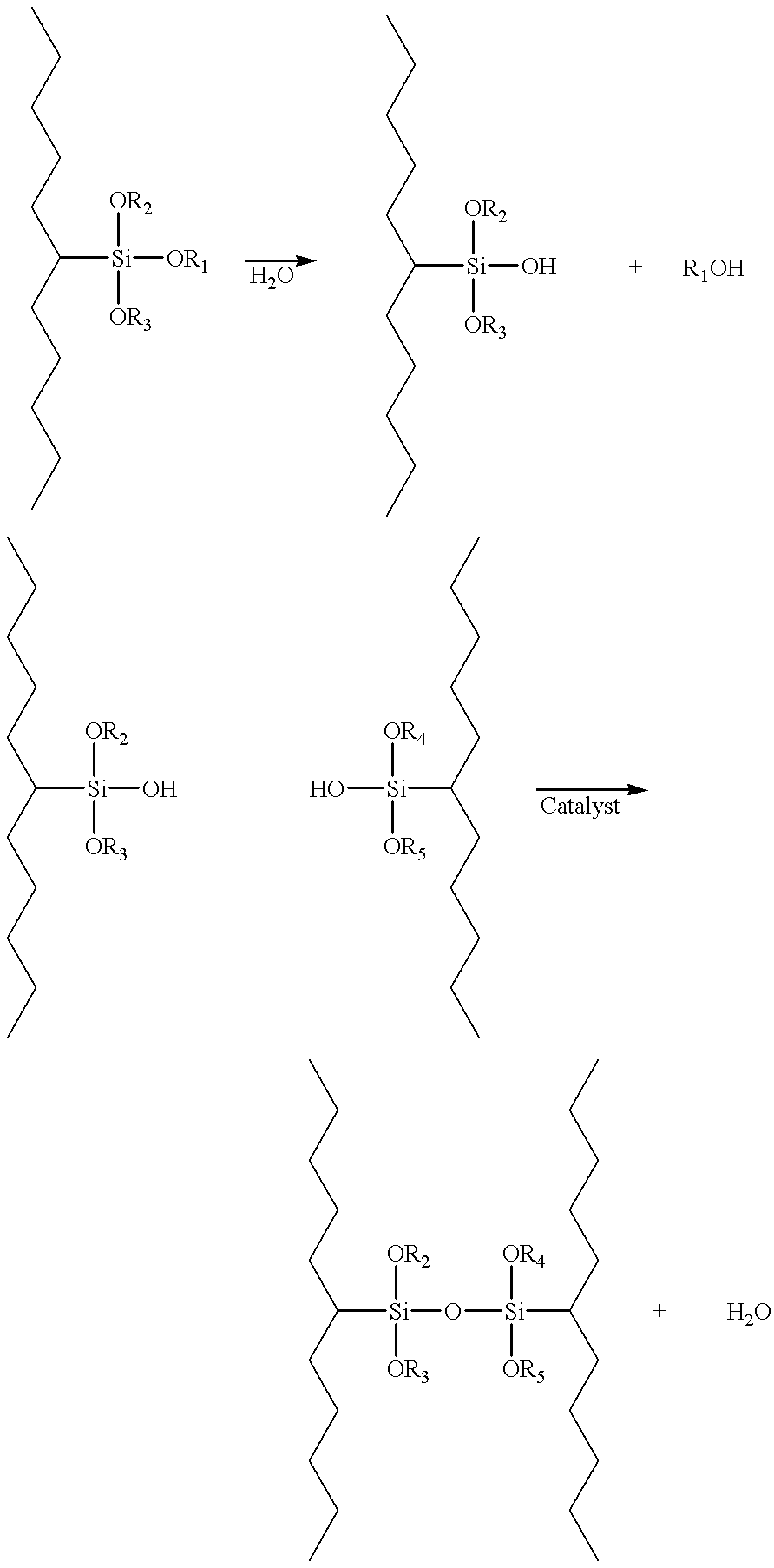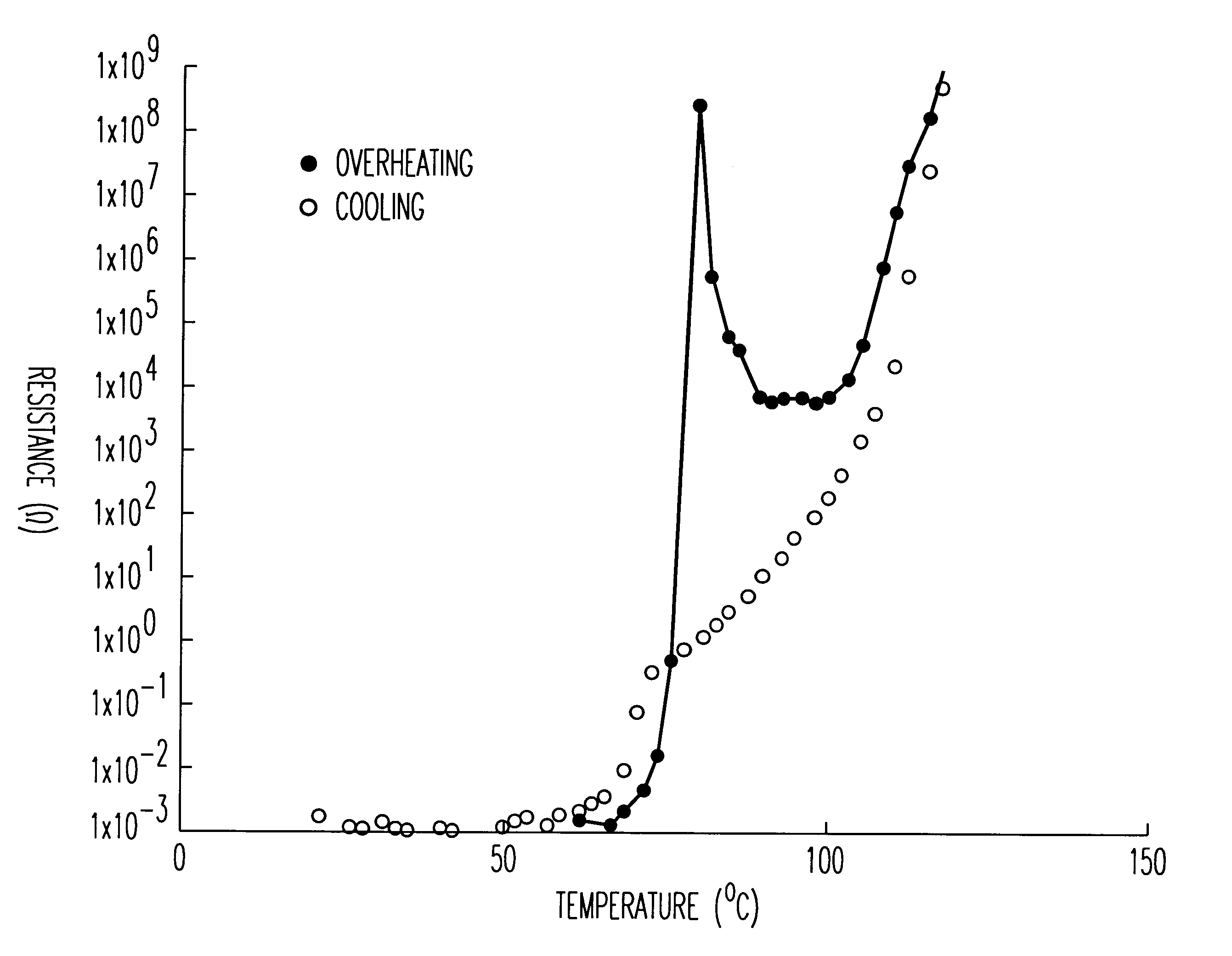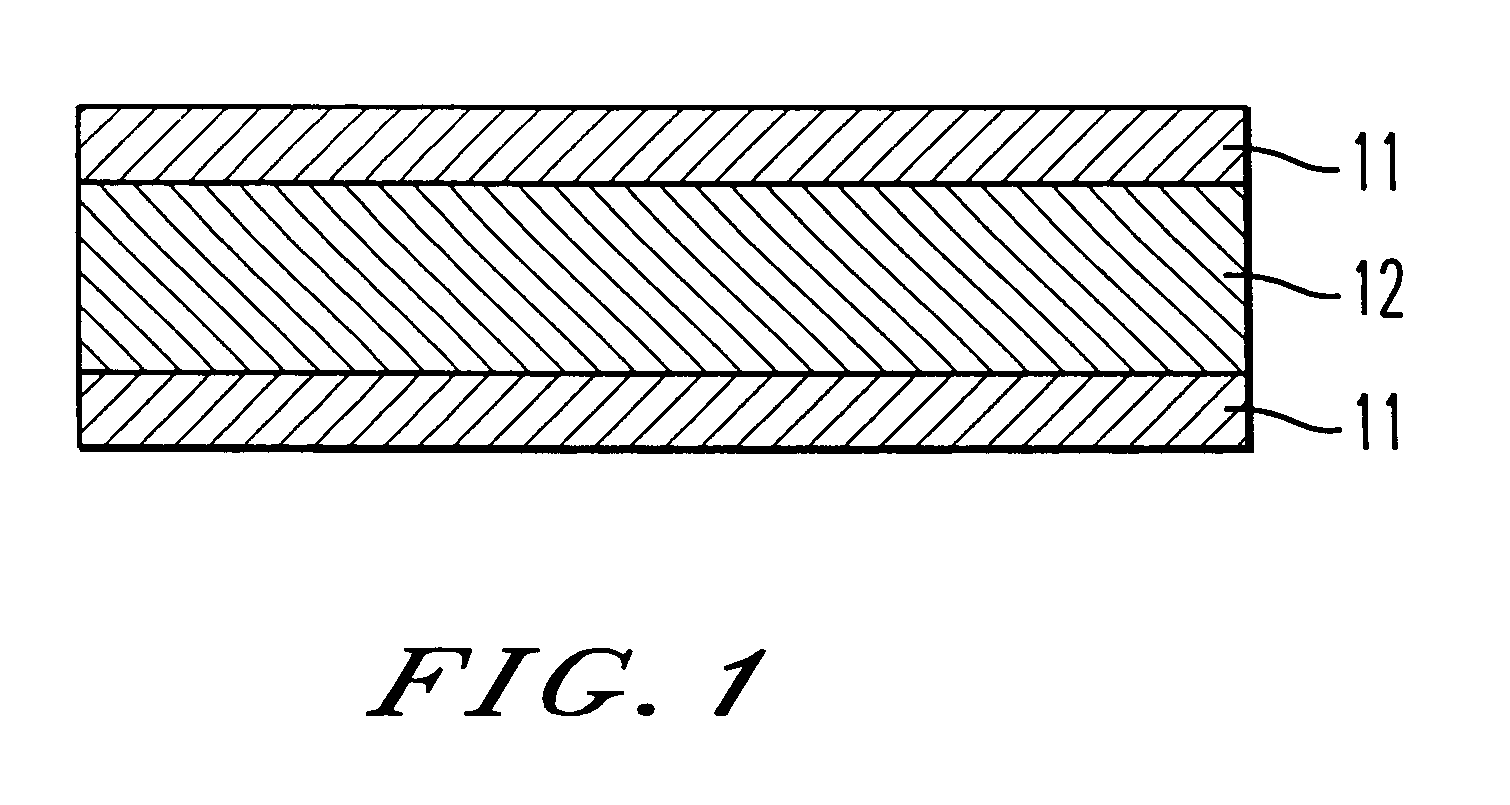Organic positive temperature coefficient thermistor
a positive temperature coefficient and thermistor technology, applied in the direction of oxide conductors, non-metal conductors, conductors, etc., can solve the problems of low initial (room temperature) no sensible trade-off between low initial resistance and large resistance change rate, and inability to achieve overcurrent protection elements or temperature sensors in particular. , to achieve the effect of suitable melting point, performance stability and melt viscosity
- Summary
- Abstract
- Description
- Claims
- Application Information
AI Technical Summary
Benefits of technology
Problems solved by technology
Method used
Image
Examples
example 1
High-density polyethylene (HY540 made by Nippon Polychem Co., Ltd. with an MFR of 1.0 g / 10 min. and a melting point 135.degree. C.) was used as the high-melting thermoplastic polymer matrix, and low-density polyethylene (LC 500 mad by Nippon Polychem Co., Ltd. with an MFR of 4.0 g / 10 min. and a melting point of 106.degree. C.) as the low-melting thermoplastic polymer matrix. Paraffin wax (HNP-10 made by Nippon Seiro Co., Ltd. with a melting point of 75.degree. C.) was used as the low-molecular organic compound and filamentary nickel powders (Type 255 Nickel Powder made by INCO Co., Ltd.) as the conductive particles. The conductive particles had an average particle diameter of 2.2 to 2.8 .mu.m, an apparent density of 0.5 to 0.65 g / cm.sup.3, and a specific surface area of 0.68 m.sup.2 / g.
The weight ratio between the high-density polyethylene and the low-density polyethylene was 4:1. The nickel powders in an amount of 4 times as large as the total weight of the polyethylene blend was a...
example 2
A thermistor element was obtained as in Example 1 with the exception that ethylene-vinyl acetate copolymer (LV 241 made by Nippon Polychem Co., Ltd. with a vinyl acetate content of 8.0% by weight, an MFR of 1.5 g / 10 min. and a melting point of 99.degree. C.) was used as the low-melting thermoplastic polymer matrix and the weight ratio between the high-density polyethylene and the ethyl-vinyl acetate copolymer was 7:3. A temperature vs. resistance curve was obtained and accelerated testing and on-off load testing were carried out as in Example 1.
The element had an initial room-temperature resistance value of 5.0.times.10.sup.-3 .OMEGA. (3.9.times.10.sup.-2 .OMEGA..multidot.cm), and showed a sharp resistance rise at around the melting point of the paraffin wax, with the rate of resistance change being 11 orders of magnitude greater. Even when the heating of the element was continued to 120.degree. C. after the resistance increase, no resistance decrease (NTC phenomenon) was observed. ...
example 3
A thermistor element was obtained as in Example 2 with the exception that ionomer (Himyran 1555 made by Mitsui-Du Pont Polychemical Co., Ltd. with an MFR of 10 g / 10 min. and a melting point of 96.degree. C.) was used as the low-melting thermoplastic polymer matrix. A temperature vs. resistance curve was obtained and accelerated testing and on-off load testing were carried out as in Example 1.
The element had an initial room-temperature resistance value of 5.5.times.10.sup.-3 .OMEGA. (4.3.times.10.sup.-2 .OMEGA..multidot.cm), and showed a sharp resistance rise at around the melting point of the paraffin wax, with the rate of resistance change being 11 orders of magnitude greater. Even when the heating of the element was continued to 120.degree. C. after the resistance increase, no resistance decrease (NTC phenomenon) was observed. The temperature vs. resistance curve upon cooling was found to be substantially similar to that upon heating; the hysteresis was sufficiently reduced.
In the...
PUM
| Property | Measurement | Unit |
|---|---|---|
| melting point | aaaaa | aaaaa |
| melt flow rate | aaaaa | aaaaa |
| melting point | aaaaa | aaaaa |
Abstract
Description
Claims
Application Information
 Login to View More
Login to View More - R&D
- Intellectual Property
- Life Sciences
- Materials
- Tech Scout
- Unparalleled Data Quality
- Higher Quality Content
- 60% Fewer Hallucinations
Browse by: Latest US Patents, China's latest patents, Technical Efficacy Thesaurus, Application Domain, Technology Topic, Popular Technical Reports.
© 2025 PatSnap. All rights reserved.Legal|Privacy policy|Modern Slavery Act Transparency Statement|Sitemap|About US| Contact US: help@patsnap.com



